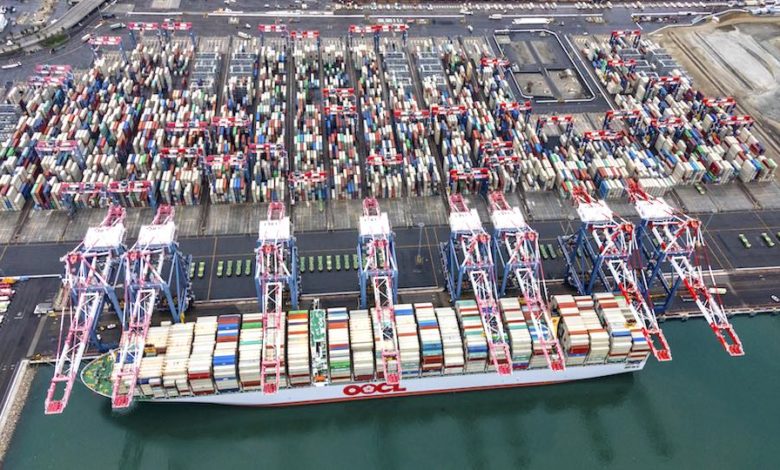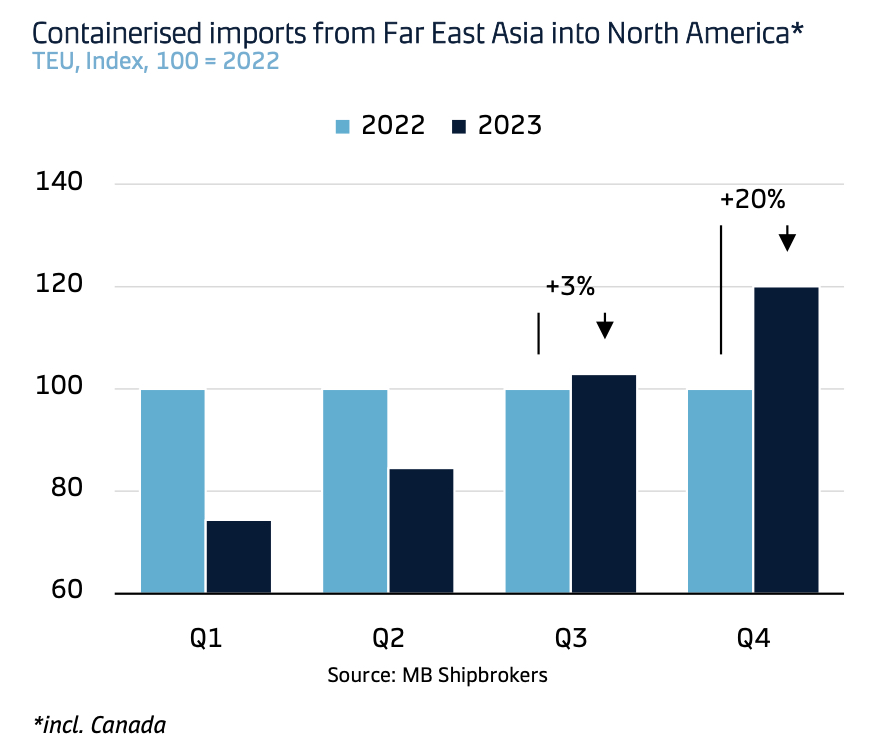Record TPM opens as ‘difficult’ transpacific contract negotiations get underway

The fortunes of the container market will become clearer this week as close to 4,000 delegates descend on Long Beach for the 24th edition of TPM, the sector’s top annual event.
The summit, which runs from Sunday to Wednesday, brings together lines and shippers to hammer out contracts and comes at a time where container shipping fortunes are slipping from their recent Red Sea-induced highs.
The Shanghai Containerized Freight Index (SCFI) dropped 6.2% on Friday, its biggest weekly decline since freight rates began to surge in December.
Freight rates have been easing on the Asia-Europe and transpacific routes in recent weeks but still remain at strong levels.
According to Clarksons data, diversions around the Cape of Good Hope remain very high at above 80% of container traffic that transits the Red Sea under normal conditions. However, the short squeeze brought on by the sudden re-routing has been abating.
Emily Stausbøll, a market analyst with Xeneta, a freight rate platform, commented recently: “Unlike during covid-19 when disruption continued to wreak havoc, shippers and carriers now know what they are dealing with in terms of ships being diverted around Africa to avoid the Suez Canal. Rates are still elevated so the impact of this crisis is far from over – and the situation can still change at any moment – but perhaps some semblance of order has been restored.”
Avoiding the Red Sea probably absorbs an additional 5% of global shipping capacity, according to HSBC.
However, it’s important to bear in mind utilisation was hovering around 70% last year, according to estimates from DNB Markets. That is well below levels in recent years which have consistently been over 80%.
Maersk expects global container volumes to grow 2.5%-4.5% in 2024. But new container shipping equal to about 11% of the current fleet will enter the seas, according to DNB.
Despite the boost from the crisis in the Red Sea, around twice as many new vessels are being delivered to the market compared to the extra capacity required to send ships around Africa, according to analysis from Maersk.
Shippers coming to TPM to thrash out annual deals with lines also have to contend with the drought restrictions at the Panama Canal this year.
“The TPM conference in Long Beach kicks off the unofficial beginning to the Transpacific contracting season, and it will be interesting to see if liners and shippers can begin to agree on deals given the volatile backdrop,” analysts at Jefferies suggested in a research note published last Friday.
Containerised imports from Asia into North America rebounded by 12% in the second half of 2023 compared to same period in 2022. Q4 2023 increased 20% above Q4 2022, according to data from MB Shipbrokers, formerly known as Maersk Broker.
Michael Braun, vice president at Xeneta, suggested contract negotiations will be “difficult” in 2024.
“I am not expecting fast negotiations this year. Shippers can fix long term but if the Red Sea situation ends earlier than expected they could be left overpaying,” he said, advising for greater flexibility in new agreements such as an agreement to review after three months or an index to mitigate risk.

